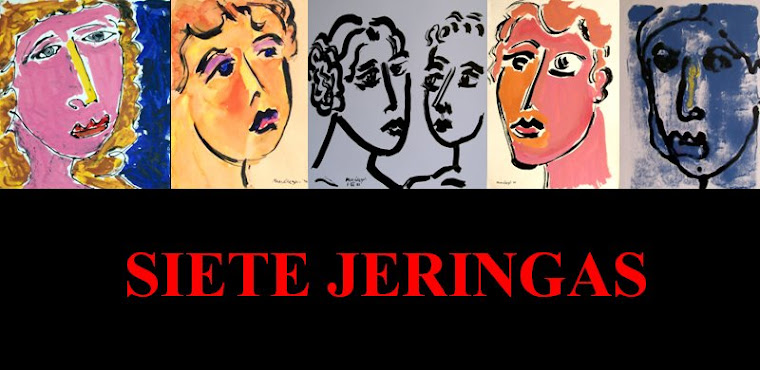Sinisa Tesankic (1949)
ESPAÑOL (TRADUCCIÓN DEL INGLES):
¿Una de las cosas gratas de las redes sociales es que se descubren artistas plásticos que están trabajando en distintas partes del mundo. En esta oportunidad nos encontramos con Sinisa Tesankic, artista plástico, nacido en Vrbanja, Croacia. Cultiva tanto el arte figurativo como el abstracto. De preferencia el abstracto. Aunque no la conocemos personalmente por la entrevista que nos ha concedido descubrimos que es una persona consagrada al arte. En sus cuadros descubrimos una pasión por el color.
Cómo fue que decidió dedicar su vida al arte?
En mi juventud a menudo observaba a mi padre, abuelo y otros miembros de mi familia mientras creaban arte. Mediante esta oportunidad de poder observar, un gran amor por las artes fue creciendo dentro de mí. Desde entonces he dedicado mi vida a las artes.
Háblenos de su formación plástica. ¿En qué escuela estudió y con qué maestros?
Estudié en la Universidad de Zabreg donde conocí a Mladen Veza, un gran pintor croata. Se convirtió en mi profesor y modelo a seguir.
De la historia del arte, ¿cuáles son sus artistas favoritos?
Mi artista favorito es el escultor Peter Smajic.
¿Le hubiera gustado pintar en otro lugar y época?
Me encantaría trabajar en otras partes del mundo, especialmente en países en desarrollo, porque a mi parecer las artes ayudan a las personas de diferentes maneras: al crear algo, las personas artísticas pueden expresar sus experiencias cotidianas o ideas sobre la vida y a la vez logran distraerse de su vida cotidiana.
¿Cómo es un día de trabajo plástico de Sinisa Tesankic?
Mi vida laboral usualmente comienza con una caminata en contacto con la naturaleza, lo cual a menudo me sirve de inspiración para nuevas ideas. Luego voy a mi estudio y empiezo a colocar estas ideas sobre lienzo. Normalmente no ceso de pintar hasta lograr plasmar mi propia idea sobre el lienzo.
¿Cuántos días de la semana dedica a la pintura?
No pasa un día en yo no que pinte o dibuje, aunque sea para hacer apuntes.
En su trabajo artístico, ¿qué es más importante, inspiración o traspiración?
Los dos.
¿Por qué prefiere pintura de pared en vez de óleo o pintura acrílica?
Prefiero óleo, acrílico y acuarela.
¿Por qué prefiere pintar abstracto en vez de figurativo?
Porque puedo expresarme con más libertad.
Además de la pintura, ¿qué otras técnicas plásticas practica y con qué regularidad?
Trabajo con regularidad como escultor.
Si tuviera la oportunidad de robar de cualquier museo del mundo una obra para tu propia colección, ¿cuál escogería?
Emil Schumacher.
¿Cómo evalúa la actual escena artística en Croacia?
La escena artística en Croacia es muy innovadora.
Una última pregunta. En Croacia, ¿qué debe hacer un artista para vender sus obras?
Debe exhibir mucho y construir una buena red.
ENTREVISTA EN INGLES:
One of the satisfactory things of the social networks is that we find plastic artists that are working all over the world. In this opportunity we have run into Sinisa Tesankic, a Croatian artist born in Vrbanja. He works both in figurative and abstract art. Preferably in abstract. Though we don´t know him personally, through the interview he has kindly granted us we can tell he is fully dedicated to the creation of art. In his paintings we discover a passion for color.
When did you decide to dedicate your life to art?
In my young days I often studied my father, grandfather and other members of my family while they were creating art. Through this opportunity of watching, a great love of the arts grew inside of me to which I then dedicated my life.
Tell us about your formation as an artist. In which art schools did you study and who were your main teachers.
I have studied at the University of Zagreb where I got to know Mladen Veža, a great Croatian painter. He became my professor and role model.
Would you have liked to paint in another place and era?
I certainly would work in many parts of the world, especially in developing countries because in my mind, the arts help people in different ways: by creating something, artistic people can express their personal daily experiences or ideas of life and at the same time they are able to distract themselves from their everyday life.
In the history of art who are your favorite artists.
My favorite artist is Peter Smajić, a sculptor.
Kindly describe a typical working day in your workshop.
My work day usually starts with a walk through nature which often serves as an inspiration for new ideas. Afterwards I go to my studio and start putting these collected ideas onto canvas. Normally I don‘t stop painting until the realization of my very own idea is done/transformed onto the canvas.
How many days of the week do you dedicate to painting?
Not one day goes past when I am not painting or drawing, even if it is only sketches.
In your art work, what has more importance: inspiration or perspiration?
Oh...both
What do you prefer, oil or acrylic paint?
I prefer oil, acrylic and water colors.
Why do you prefer abstract painting over figurative painting?
Because I can express myself more freely.
Aside from painting, what other art techniques do you practice and with what regularity.
I work regularly as a sculptor.
If you had the chance to steal from any museum in the world a painting of your choice for your own collection, which one would you choose?
Emil Schumacher.
How do you evaluate the current art scene in Croatia?
The art scene in Croatia is very innovative.
In Croatia, what does an artist have to do to sell his work?
Make many exhibitions and build a good network.

















No hay comentarios:
Publicar un comentario